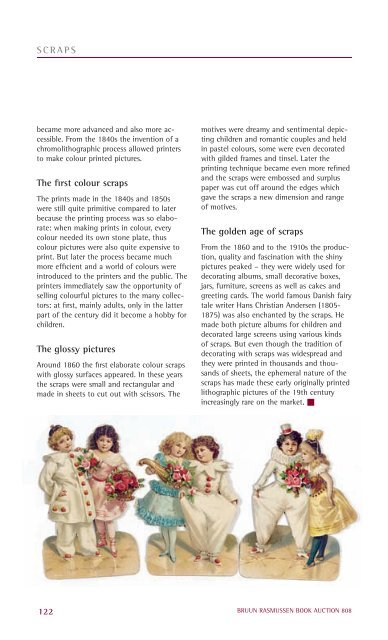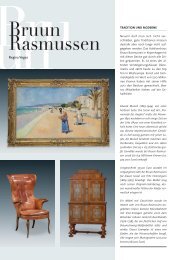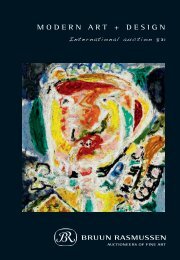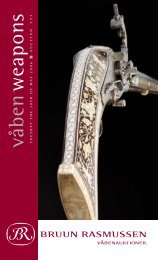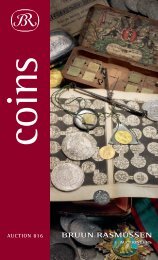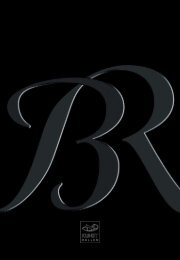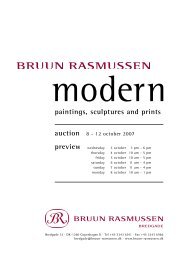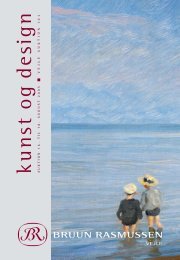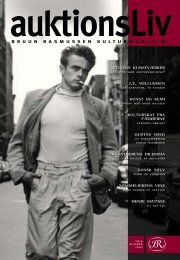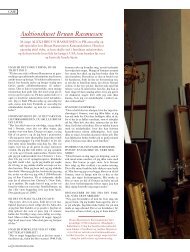Upcoming online-auction - Bruun Rasmussen
Upcoming online-auction - Bruun Rasmussen
Upcoming online-auction - Bruun Rasmussen
Create successful ePaper yourself
Turn your PDF publications into a flip-book with our unique Google optimized e-Paper software.
SCRAPS<br />
became more advanced and also more accessible.<br />
From the 1840s the invention of a<br />
chromolithographic process allowed printers<br />
to make colour printed pictures.<br />
The first colour scraps<br />
The prints made in the 1840s and 1850s<br />
were still quite primitive compared to later<br />
because the printing process was so elaborate:<br />
when making prints in colour, every<br />
colour needed its own stone plate, thus<br />
colour pictures were also quite expensive to<br />
print. But later the process became much<br />
more efficient and a world of colours were<br />
introduced to the printers and the public. The<br />
printers immediately saw the opportunity of<br />
selling colourful pictures to the many collectors:<br />
at first, mainly adults, only in the latter<br />
part of the century did it become a hobby for<br />
children.<br />
The glossy pictures<br />
Around 1860 the first elaborate colour scraps<br />
with glossy surfaces appeared. In these years<br />
the scraps were small and rectangular and<br />
made in sheets to cut out with scissors. The<br />
122<br />
motives were dreamy and sentimental depicting<br />
children and romantic couples and held<br />
in pastel colours, some were even decorated<br />
with gilded frames and tinsel. Later the<br />
printing technique became even more refined<br />
and the scraps were embossed and surplus<br />
paper was cut off around the edges which<br />
gave the scraps a new dimension and range<br />
of motives.<br />
The golden age of scraps<br />
From the 1860 and to the 1910s the production,<br />
quality and fascination with the shiny<br />
pictures peaked – they were widely used for<br />
decorating albums, small decorative boxes,<br />
jars, furniture, screens as well as cakes and<br />
greeting cards. The world famous Danish fairy<br />
tale writer Hans Christian Andersen (1805-<br />
1875) was also enchanted by the scraps. He<br />
made both picture albums for children and<br />
decorated large screens using various kinds<br />
of scraps. But even though the tradition of<br />
decorating with scraps was widespread and<br />
they were printed in thousands and thousands<br />
of sheets, the ephemeral nature of the<br />
scraps has made these early originally printed<br />
lithographic pictures of the 19th century<br />
increasingly rare on the market.<br />
BRUUN RASMUSSEN BOOK AUCTION 808


